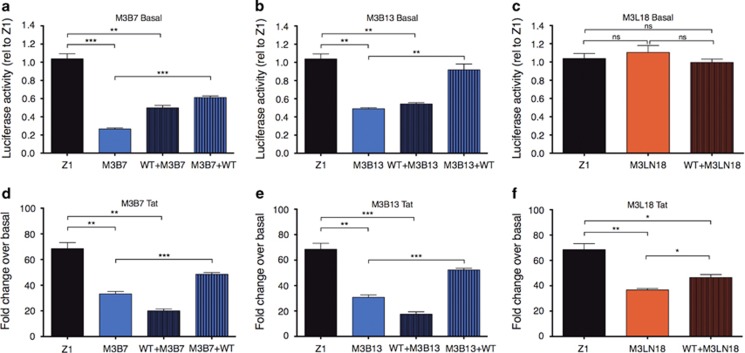Figure 4.
Effect of CNS-derived Sp motif polymorphisms on consensus T-cell-derived promoter activity. The Sp motifs from the CNS-derived isolates M3B7 and M3B13, and the lymphoid-derived isolate M3L18 were introduced into the Z1 T-cell-derived promoter Sp core region (WT+M3B7, WT+M3B13, WT+ML18), and the transcriptional activity determined. Conversely, the consensus Z1 T-cell Sp motifs were introduced into the CNS-derived isolates M3B7 and M3B13 (M3B7+WT; M3B13+WT) and the transcriptional activity determined. Basal transcription is shown in a, b and c, whereas Tat-activated transcription is shown in d, e and f. Blue bars represent CNS-derived LTR backbones; red bars represent lymphoid-derived LTR backbones; black bars represent consensus T-cell LTR backbones. Data shown are representative of four independent experiments, each experiment performed in triplicate. Shown are the means and s.e.m. of these data. Significance values (calculated using student's t-test): *P=<0.05, **P=<0.01, ***P=<0.001, ns=not significant. CNS, central nervous system; LTR, long terminal repeat.

